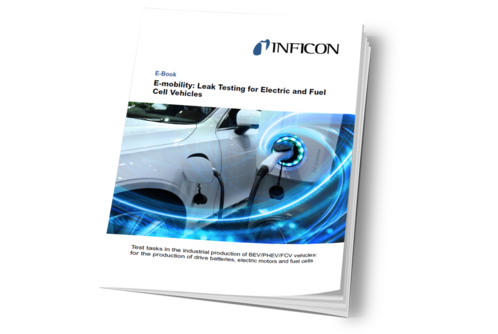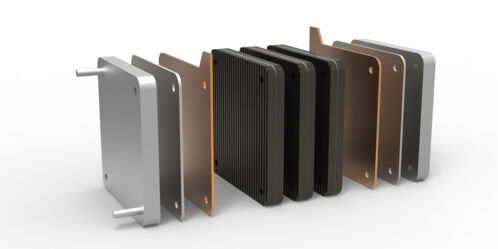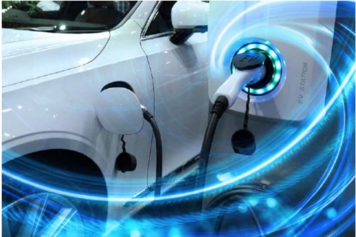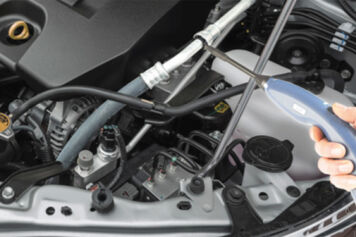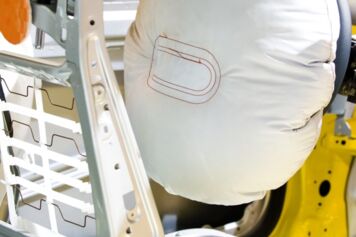Fuel Cell Vehicles (FCVs)
A technology with own leak testing requirements.
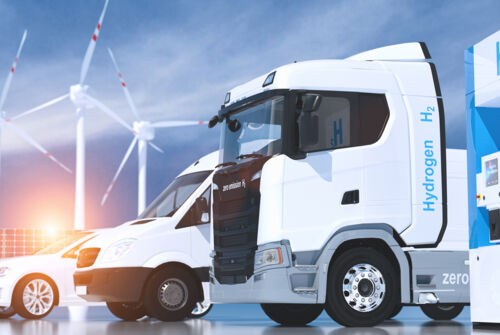
The hydrogen technology of fuel cell vehicles (FCVs) brings its own leak testing requirements - for hydrogen tanks and lines, for hydrogen recirculation, and for the bipolar plates and membrane electrode assemblies (MEAs) that you later assemble into fuel cell stacks. Typical fuel cell failure modes include crossover leaks between anode and cathode or overboard leaks at seals, through which hydrogen reacts uncontrollably with oxygen.
Hydrogen should also not be allowed to leak into the cooling circuit. For all hydrogen carrying components, use the smallest possible reject leak rate in the range of 10-5 mbar∙ l/s, very similar to the settings for CNG / LNG components. There is hardly any way around test gas-based methods when hydrogen is used. Some fuel cell components are best tested with short cycle times in a vacuum chamber. For sub-assembled FCV systems like hydrogen tank systems, automated robotic sniffer leak testing is recommended.
Do you need to leak test a specific FCV component?
We are happy to support you in finding the solution that best fits your needs! Just contact us!
You want to learn more about leak testing of fuel cells?
Check out our application notes!
Download our free E-mobility E-Book
